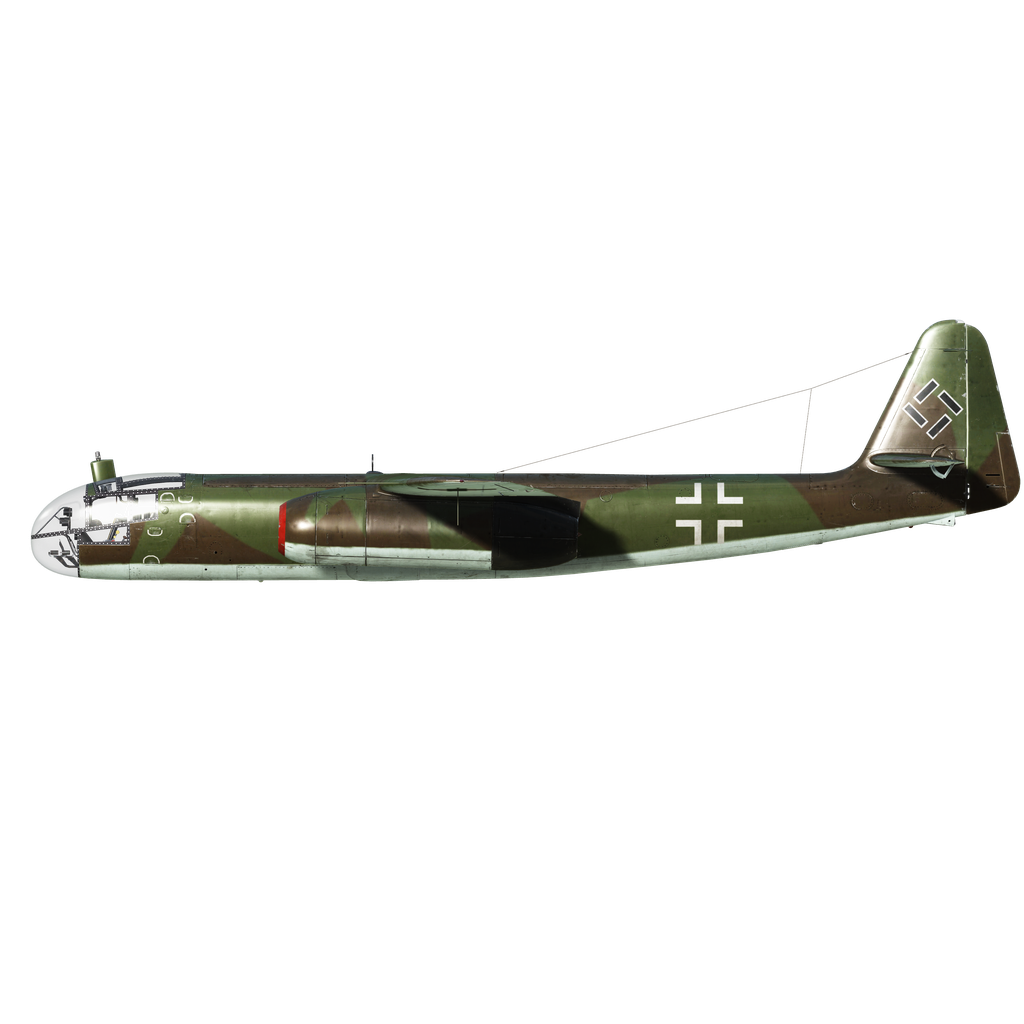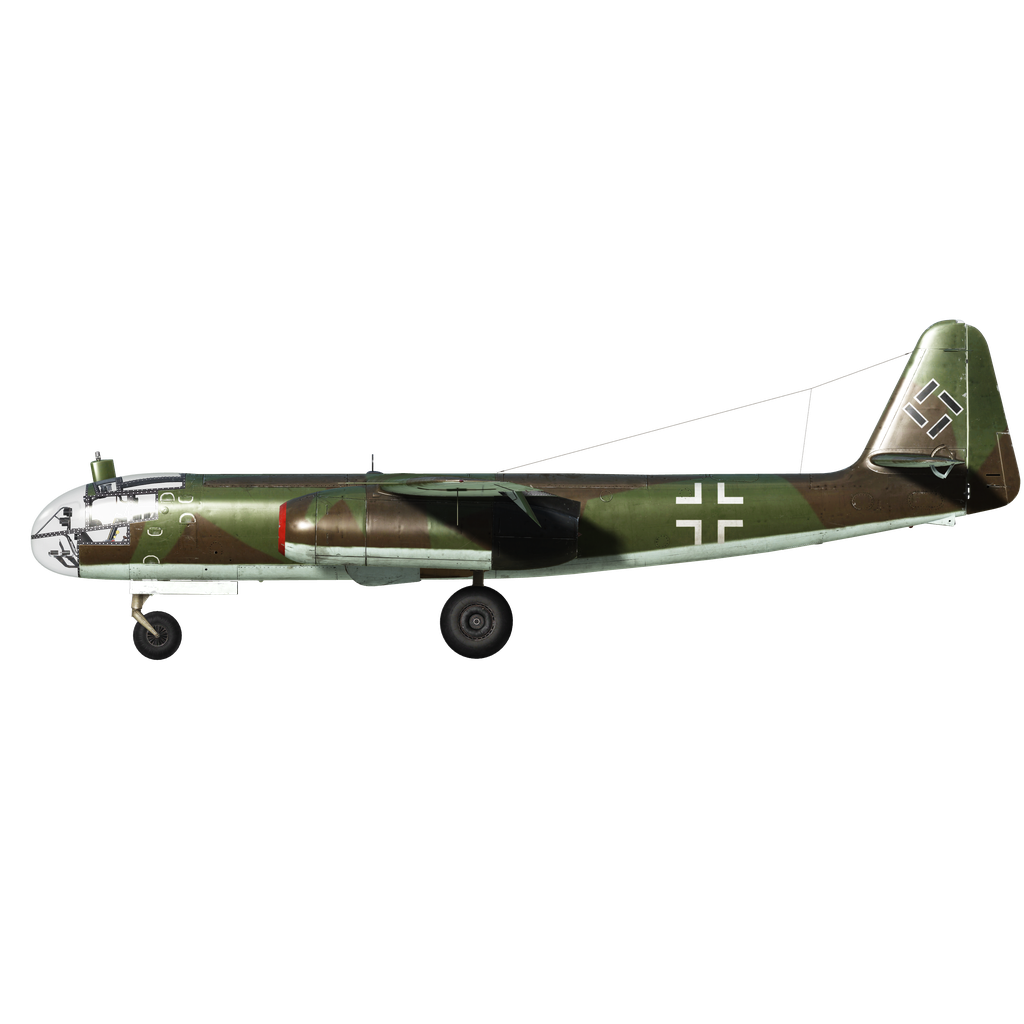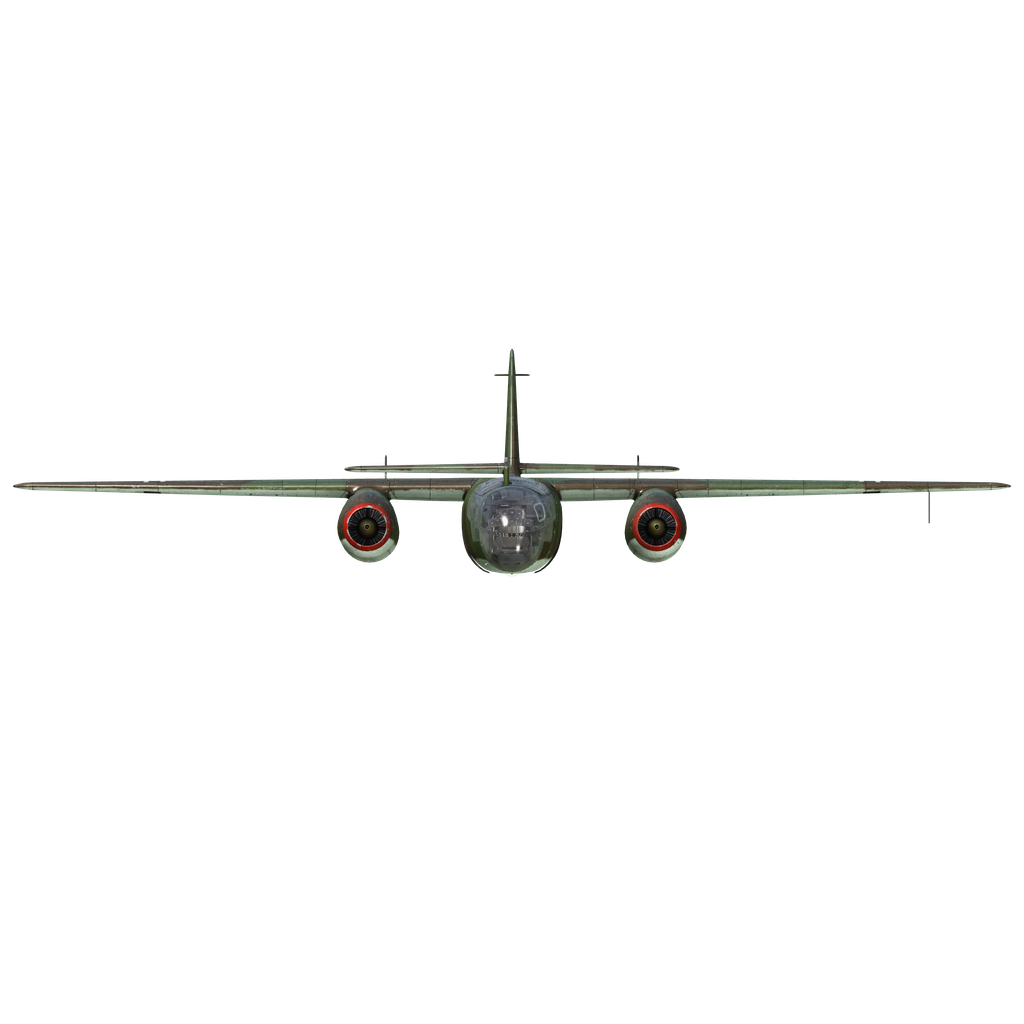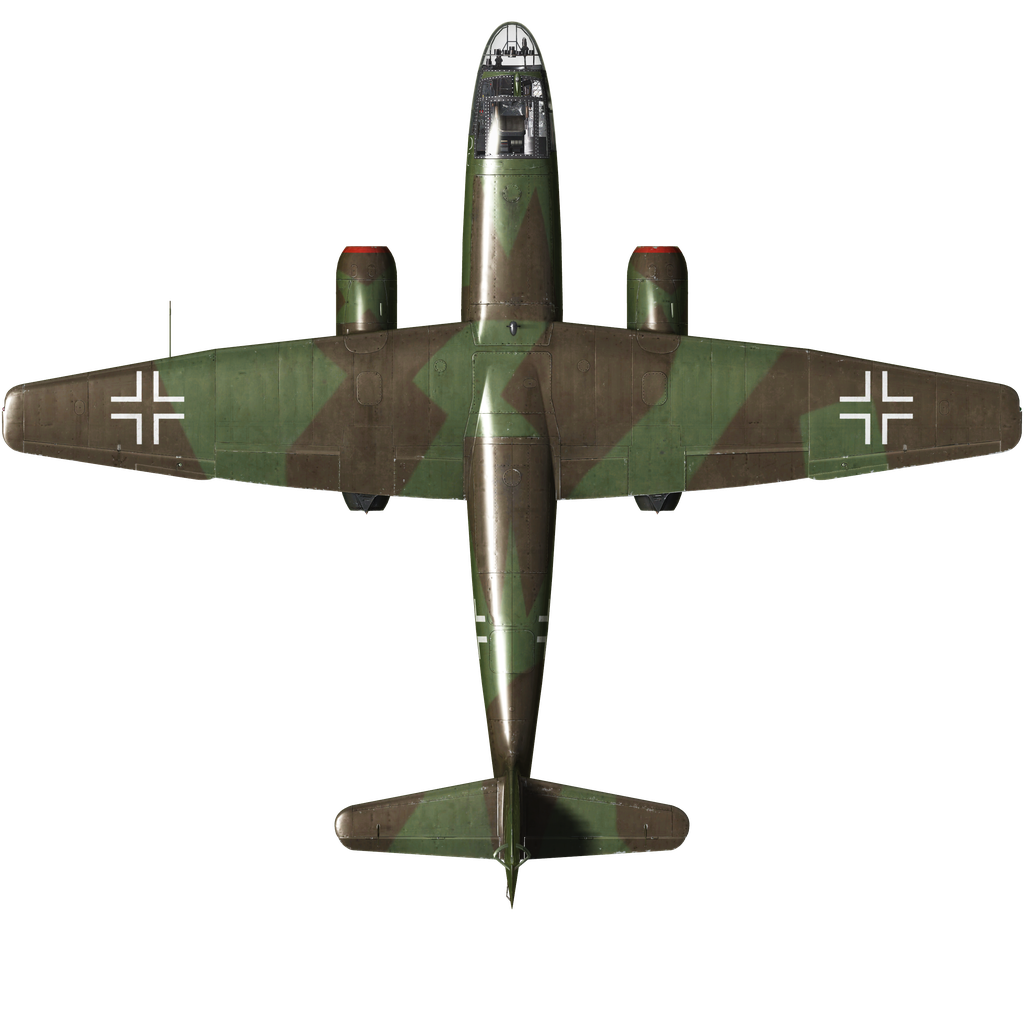The Arado Ar 234 "Blitz" (Lightning), the world's first mass-produced jet bomber used in combat during the final phase of World War II, began development in 1940 as a reconnaissance bomber. The prototype was tested with conventional piston engines in 1941, as the turbojet engines were not yet ready for flight. The aircraft made its first flight with turbojet engines in the spring of 1943. The first aircraft took off from a bogie and landed on skids, which made it difficult to operate in combat conditions. The B modification was therefore equipped with a wheeled landing gear. The prototype of the Ar 234B took to the skies on March 10, 1944, and from the middle of the same year, the Ar 234B-2 modification went into production and was used as a bomber and a reconnaissance aircraft.
The Ar 234B-2 was a single-seat all-metal high-wing aircraft with two Jumo-004B turbojet engines mounted under the wings. The cockpit was located in the nose and was large and glazed. The only armor protection was a 15.5 mm plate protecting the pilot's head and shoulders. The plane's wing was a two-lobed wing of a large area and double sweep at the leading edge. The landing gear was of the tricycle type. The main landing gear struts were equipped with large-diameter low-pressure wheels. They were hydraulically retracted forward and closed with hydraulically operated flaps. The nose strut was located behind the cockpit and retracted aft. The aircraft was usually equipped with an autopilot.
The aircraft was equipped with a BZA-1B bomb sight for dive bombing. A special PV-1B periscope was used for targeting. It was mounted in the upper part of the cockpit in front of the pilot. The PV-1B could also be used to observe the rear hemisphere using a rotating prism.
The Lotfe 7K bomb sight was installed later along with the autopilot. It was located between the pilot's legs and allowed accurate bombing from horizontal flight. To use it, the steering wheel was retracted to the side, and since the pilot had to reach for the sight from his seat, it was equipped with a detachable extended eyepiece. Since the autopilot was given full control of the aircraft to use this sight, the machine was vulnerable to enemy fighter attacks and anti-aircraft artillery fire. This was also exacerbated by the external suspension of the bombs, which reduced the maximum speed. The Lotfe 7 was therefore rarely used.
The aircraft could carry three 500 kg bombs or one 1000 kg bomb or one 1000 kg together with two 250 kg bombs or three 250-500 kg bomb cassettes. Two special Walter HWK 109-500 liquid propellant rocket engines were used for takeoff with maximum bomb load, which were suspended under the wings and provided an additional 1000 kgf of thrust, and were dropped by parachutes after climbing to altitude.
In the reconnaissance variant, the aircraft was equipped with 2 Rb 50/30 or Rb 75/30 aerial cameras.
-
B-2/p - Patin autopilot installed PDS;
-
B-2/b - photo reconnaissance version;
-
B-2/r - option to be equipped with additional fuel tanks.
These variants could occur in various combinations. For example, Ar 234B-2/bpr.
A total of 210 - 214 aircraft were built, of which only a small number were delivered to combat units by the end of the war. The aircraft was primarily used as a photo reconnaissance and bomber in the battles on the Western Front. All of the bombers were used in a single unit, KG 76, while individual aircraft were used as scouts in separate reconnaissance squadrons.
Although the Ar 234 B-2 when armed with bombs had a maximum speed of 692 km/h at an altitude of 6,000 meters, it could evade Allied interceptors at this speed. In combat, the pilots actively used their main trump cards - speed, rate of climb, and altitude. However, the Ar 234 had serious drawbacks: it proved to be difficult to fly, especially during takeoff and landing, and required highly skilled pilots. The Jumo engines were unpredictable, prone to fire, and required smooth throttle control.
Despite all its shortcomings and the small number of aircraft used in combat, the Ar 234B-2 proved that the future of aviation lay in jet aircraft.
1. W. Creen "The Warplanes of the Third Reich", Galahad Books, 1986.
2. "Wings of the Luftwaffe" Translation of W. Green's book "Combat Airplanes of the Third Reich" by A. Firsov, 1993.
3. W. Green, R. Cross "Jet Airplanes of the World", 1957.
4. Materials of the site airwar.ru






